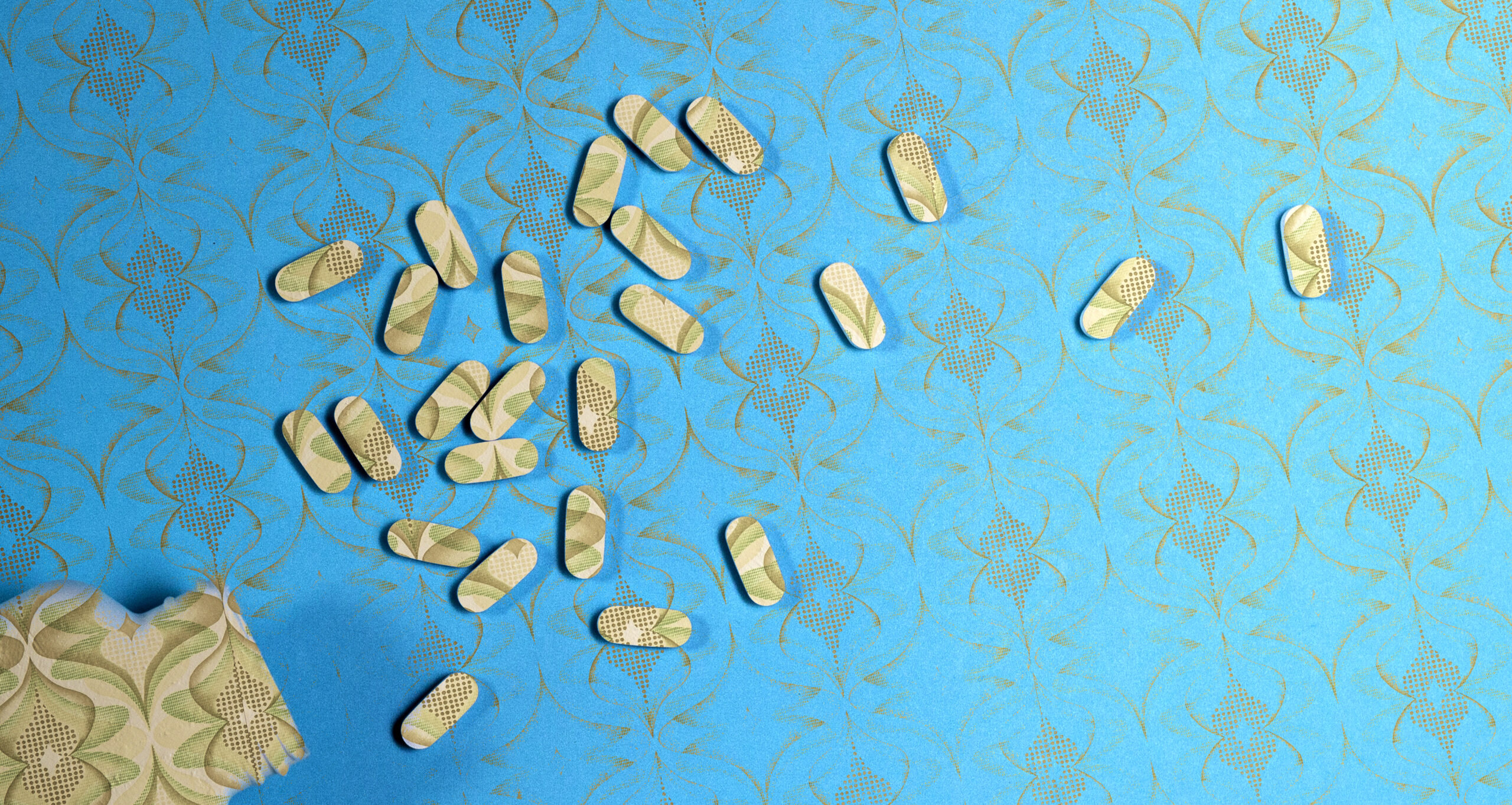Doctor of death: How Dr. Baulieu’s “empowerment” project betrayed women, science, and life itself
Published on June 11, 2025

The story of the doctor of death Dr. Baulieu starts in a quiet laboratory on the outskirts of Paris. Dr. Étienne-Émile Baulieu believed he had unlocked a modern miracle—a simple pill, just a few milligrams in size, that could erase the consequences of sex. This creation was RU-486, now known as mifepristone: the abortion pill that would go on to end millions of lives, pollute the environment, disrupt women’s endocrine health, and usher in an era where ideology wore a white coat and called itself science and empowerment.
Baulieu died last month on May 30, 2025, at the age of 98, at his home in Paris. Lauded by legacy media as a “pioneer” and a “liberator,” his death was followed by glowing obituaries that praised him for giving women control over their bodies. But beneath the rhetoric of reproductive rights lies a legacy far more complicated—and far more devastating.
The man who wanted to outrun nature
Dr. Baulieu, born Étienne Blum in 1926 to a secular Jewish family, rose to prominence as a biochemist during the era when the birth control pill was transforming sexual norms across the Western world. His career was driven by a singular belief: that biology is not a limiting boundary, but a problem to be solved.
Biology is not a limiting boundary, but a problem to be solved.
In the 1980s, Baulieu developed RU-486—a synthetic steroid that blocks progesterone, the hormone necessary to sustain pregnancy. The pill causes the uterine lining to break down, effectively starving a developing embryo and forcing the body to expel it. To finish the process, a second drug—misoprostol—is taken to induce contractions and bleeding. What can follow is a physical trauma that occurs in silence, often alone, in bathrooms, dorms, or locker rooms. The experience is in some ways similar to a miscarriage, which is a matter of nature, but with this newly developed pill, humans now have what we think is power over nature.
And this, we are told, is liberation.
When science becomes a tool for ideology
Baulieu often described his work in the language of freedom, casting chemical abortion as an “ethical” breakthrough and denouncing any effort to limit access to it as backward. But history—especially the atrocities of the twentieth century—has shown what happens when science is stripped of its moral compass and detached from a reverence for human life. It ceases to heal and begins to serve ideology. RU-486 stands as a haunting remnant of that shift: a chemical weapon rebranded as liberation, power, and progress.
The abortion pill is a chemical weapon rebranded as liberation, power, and progress.
And that’s exactly what happened.
RU-486 was not born from a neutral quest for health. It was conceived in a cultural moment that viewed fertility as a flaw, motherhood as a trap, and femininity as something to suppress medically. Instead of treating disease, Baulieu’s invention treated life itself as the disease.
Empowerment, in his thinking, meant chemically undoing the body’s most natural function. But what have we gained? What have we lost?
Mental health: The silence that follows
Chemical abortion is often portrayed as quick, easy, and private. But post-abortive women speak of a different reality: one filled with physical pain, blood loss, and a haunting sense of grief. Unlike surgical abortion, which is typically performed in a medical facility, the abortion pill transfers the weight, both physical and emotional, entirely onto the woman.
Studies have shown that women who undergo medical abortions have increased rates of anxiety, depression, and even suicidal ideation. And this is not simply because women are “stigmatized.” It’s because they are biologically, spiritually, and emotionally tethered to what is growing inside them, even if modern culture tells them otherwise.
It’s important to acknowledge that studying the psychological aftermath of abortion presents inherent challenges. Trauma does not follow a linear path. A woman’s emotions may shift over time as she processes her experience — what feels like relief in the moment can slowly unravel into grief, guilt, or numbness. This makes statistical tracking difficult and often underrepresents the true emotional toll. But even with these complexities, the pattern is unmistakable: women who undergo abortion report significantly higher rates of depression, anxiety, and suicidal thoughts compared to those who have not. The data may be imperfect, but the pain behind it is real and clear.
Nonetheless, a recent study from the Ethics and Public Policy Center has cast a new and sobering light on the physical dangers of the abortion pill—dangers that far exceed what the FDA has acknowledged. In what is believed to be the largest-known study of mifepristone abortions in the United States, researchers analyzed insurance claims from over 865,000 cases between 2017 and 2023. The findings are staggering: 10.93% of women experienced serious complications, ranging from sepsis to life-threatening hemorrhaging, within 45 days of taking the pill. A rate 22 times higher than what the FDA’s label suggests. Even more alarming, the pill’s failure rate—meaning it did not fully complete the abortion and required surgical intervention—was at least 5.26%, double the FDA’s claim. While critics argue about the study’s peer-review status, its methodology was robust, excluding unrelated emergency visits and relying solely on abortion-specific diagnostic codes. Validated by independent doctors and data scientists, the study paints a dire picture of a drug that has been marketed as safe, easy, and empowering—when in reality, it may be anything but.
While most pharmaceuticals are legally required to list even minimal side effects and as a society, we’ve grown accustomed to those warnings, the abortion pill continues to be marketed as a magic path to freedom and empowerment, with little regard for the serious risks posed by this potent drug.
Hormonal fallout
There’s growing concern among integrative physicians, endocrinologists, and environmental health experts that the widespread use of hormonal interventions—including abortion pills—may have lasting effects not only on individual women’s hormonal health but also on public health more broadly.
Abortion pills may have lasting effects not only on individual women, but also on public health more broadly.
Mifepristone works by blocking progesterone, a hormone essential for sustaining pregnancy, but progesterone also plays a critical role in regulating mood, metabolism, and menstrual stability. Disrupting this delicate hormonal dance can throw the entire endocrine system off balance, potentially affecting menstrual cycles, ovulation, fertility, and long-term reproductive resilience. Many women report irregular bleeding, painful periods, hormonal crashes, and delayed return to fertility after taking the pill.But the impact doesn’t end with the individual. Even if you’re not the one ingesting these pharmaceuticals, they’re still entering our shared environment. Once flushed into wastewater, hormonal compounds like mifepristone can linger in the ecosystem—and trace amounts can ultimately cycle back into the water we drink. So while a woman may believe she’s making a private decision about her own body, the ripple effects touch every body: human, animal, and ecological. Yet despite these far-reaching implications, no one warns her at the pharmacy counter. No one tells her that this “simple” pill might echo through her body—and her world—for years to come.
The studies on hormonal contamination have proven to be contentious in the Western world, but this Chinese study revealed that progestogens, including synthetic hormones, are widely distributed in wastewater and are not always effectively removed during treatment. Some compounds exhibited removal efficiencies below 50%, leading to their presence in effluents and potential risks to aquatic organisms.
An environmental catastrophe in disguise
Very few people speak openly about the environmental cost of the abortion pill. Mifepristone, a synthetic steroid hormone, does not simply vanish after use. Like many pharmaceuticals, it enters wastewater through excretion or improper disposal, slipping past conventional filtration systems and into rivers, lakes, and soil. There, it contributes to the hormonal pollution already disrupting our ecosystems—feminizing male fish, impairing reproduction in amphibians, and throwing the endocrine systems of countless species into disarray. This isn’t speculative; it’s a growing field of ecotoxicology that points to measurable biological damage caused by synthetic hormones.
And yet, in a culture obsessed with clean beauty, hormone-free skincare, BPA-free water bottles, and organic vegetables, the silence is deafening. We scrutinize shampoo labels for sulfates, but say nothing about what 5.6 million chemical abortions per year might be doing to our water and wildlife.
Some may argue that pharmaceutical waste is just a drop in the ocean compared to industrial pollution, but that’s precisely the illusion that enables accumulation. When the body, the soil, and the sea are all absorbing synthetic compounds designed to terminate life, we have to ask: What kind of world are we building? In the name of saving the world from overpopulation, we have done more damage than so-called climate change.
We were made for more
When a society severs life from love, and fertility from femininity, what it leaves behind is a wasteland of grief. One that can’t be fully measured by data charts or peer-reviewed journals. It’s found in the unspoken guilt, the strained relationships, the child who was never born, and the woman who quietly wonders, months or years later, whether she lost something sacred.
Baulieu believed he had created a solution. But he had really created a weapon—one that has now become one of the most common tools of mass death in modern history.
And the most chilling part? It was all done under the banner of health care and empowerment.
Real empowerment doesn’t come from medical suppression. It doesn’t come from turning against our bodies or silencing the wisdom they hold. It comes from reclaiming the truth: that womanhood is not a pathology to be managed, but a calling to be honored.
Science, when ordered towards the service and care of humans, should serve life—not extinguish it. It should support a woman’s dignity, not betray it. It should see biology not as an enemy, but as a sacred language we were entrusted to speak.
Dr. Baulieu may be gone. But the ideology he helped advance is still very much alive—and it’s up to us to expose it, confront it, and offer something better.




AMEN! AMEN! Very perfectly stated! I wish more women could find the strength to share their experiences in a broader way so that it becomes real and believable to those thinking about using this drug. Women relate much more to other women sharing their personal experiences. Also more effort to make known the environmental effects would be invaluable.